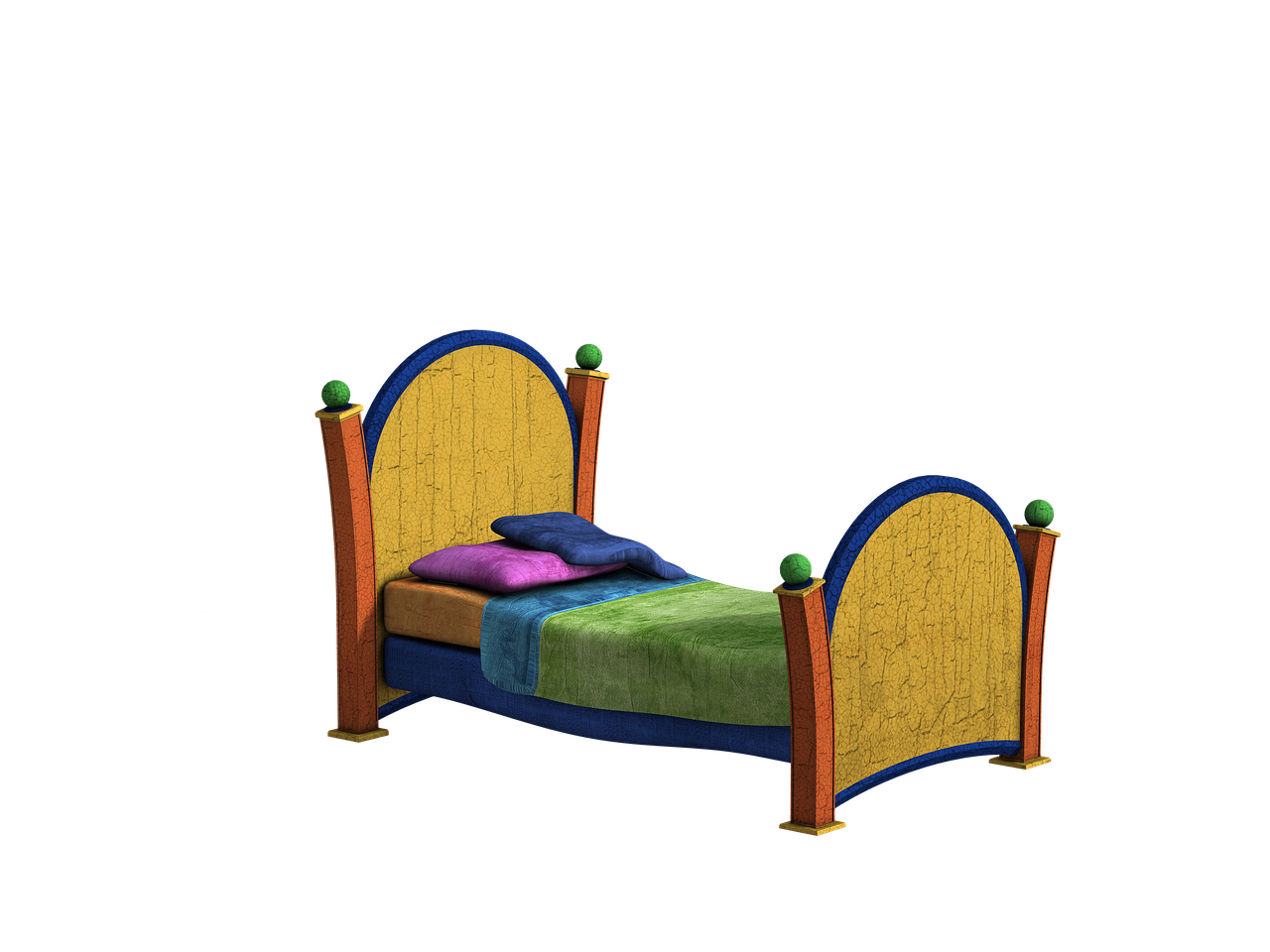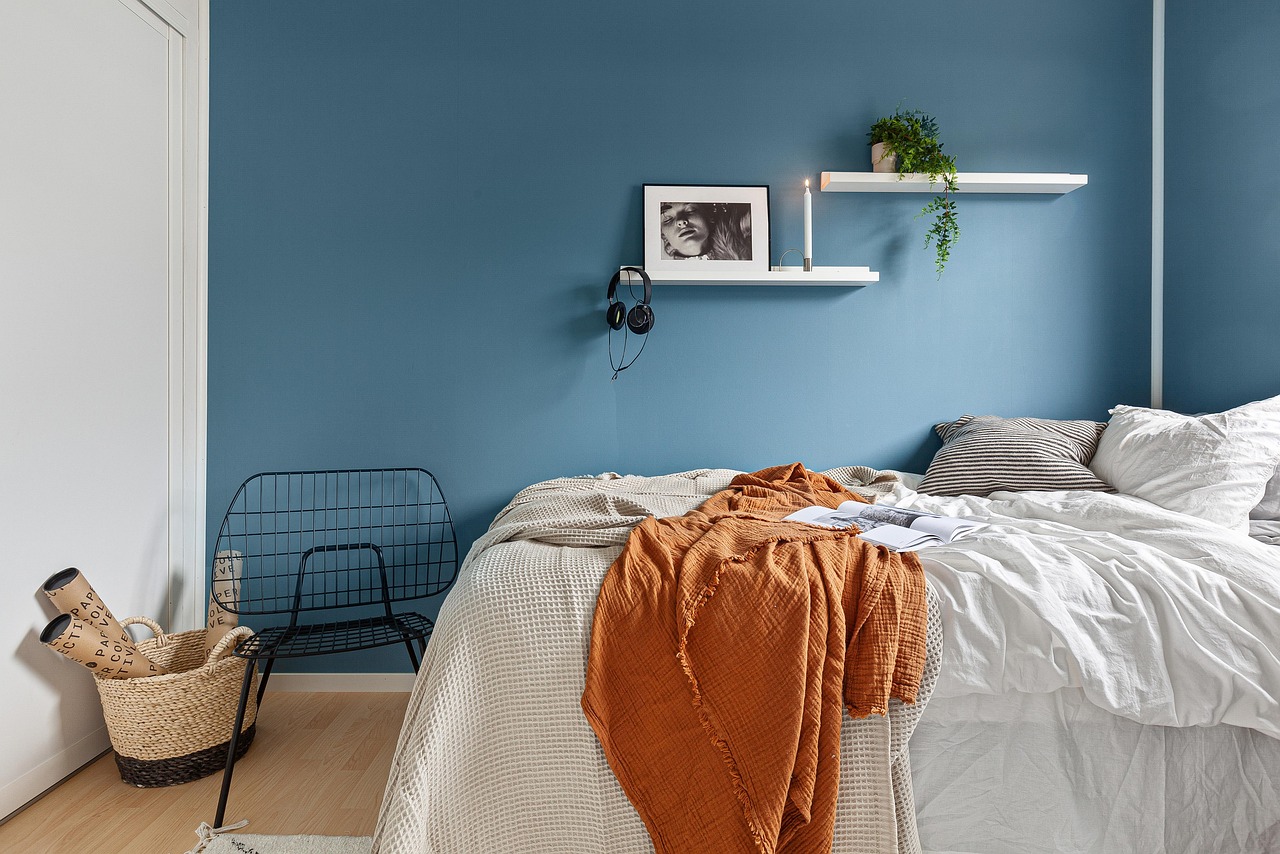Are you trying to figure out exactly how much wall space and floor clearance a horizontal queen Murphy bed will use in your room?

What Are The Dimensions Of A Horizontal Queen Murphy Bed?
You want clear, usable numbers and practical guidance so you can plan furniture, traffic flow, and installation. This article breaks down the typical dimensions, required clearances, mattress considerations, installation tips, room sizing guidance, and safety notes so you can make an informed decision.
What is a horizontal queen Murphy bed?
A horizontal Murphy bed (also called a sideways or lateral wall bed) stores and opens with the mattress’s long side running parallel to the wall when upright. In other words, the mattress rotates from storage into the sleeping position with the head or foot toward a side wall rather than toward the ceiling. This orientation changes cabinet height and width compared with a vertical wall bed and affects how much floor space the bed occupies when open.
Why the orientation matters for dimensions
The orientation converts mattress length and width into different cabinet dimensions and projection distances. That directly affects cabinet size, clearance needs, and the room layout you should plan for. Understanding which mattress side becomes the cabinet’s height and which becomes the projection into the room helps you plan accurately.
Standard mattress dimensions you need to know
You should always start with the mattress size because the cabinet and clearances are built around it. For a queen mattress, the standard dimensions are:
- Mattress size (Queen): 60 inches wide x 80 inches long (152 cm x 203 cm).
These are mattress surface dimensions, not cabinet dimensions. You’ll need to add frame thickness, mechanism space, and clearance when calculating the final cabinet size.
How mattress orientation affects cabinet dimensions
When you choose a horizontal orientation, the mattress long side (80″) typically becomes the cabinet width, and the mattress short side (60″) becomes the cabinet height (plus framing). That’s different from vertical beds where mattress length becomes cabinet height and width becomes cabinet width. This swap is why horizontal cabinets tend to be lower but wider than vertical cabinets.
Typical exterior cabinet dimensions (closed)
You should budget for a range because manufacturers and custom builders vary. Below is a practical table of common closed-cabinet exterior dimensions for a horizontal queen Murphy bed.
| Dimension | Typical range (inches) | Typical range (cm) | Notes |
|---|---|---|---|
| Cabinet width (left to right) | 82″ – 90″ | 208 – 229 cm | Must accommodate mattress length (80″) + framing and trim |
| Cabinet height (floor to top) | 62″ – 68″ | 157 – 173 cm | Must accommodate mattress width (60″) + frame + decorative top |
| Cabinet depth (front to back, closed) | 12″ – 20″ | 30 – 51 cm | Depends on mattress thickness and frame design |
| Open projection (from wall to front edge of mattress when bed is down) | ~60″ – 62″ | 152 – 157 cm | This equals mattress width (60″) plus minimal gap for hardware |
| Required wall opening (for mounting plate/clearance) | width of cabinet + 1–2″ | cabinet width + 2–5 cm | Allow small wiggle room for fasteners and shims |
These figures are typical; specific models can fall outside these ranges. If you plan a custom unit, your cabinet width will be closer to mattress length + exact trim and interior allowances (e.g., 80″ + 2–8″).
Why cabinet depth varies so much
Depth depends on mattress thickness and how much space the mechanism requires when the bed is stored vertically. Thicker mattresses or extra frame/box spring-style components require deeper cabinets. Many horizontal wall bed designs require slimmer mattresses, which reduces cabinet depth and gives a sleeker profile.
Open dimensions and how much floor space you’ll need
When the bed is down, the active footprint equals the mattress footprint plus any legs or accessory framing. For a queen, that is typically 60″ x 80″ (152 x 203 cm).
- Open footprint on the floor: 60″ deep (from wall outward) x 80″ wide (left to right).
- Usable walking/clearance zone at foot of bed: you should leave at least 24″–36″ of space in front of the bed if possible for comfortable access and movement.
Minimum comfortable room depth
To use a horizontal queen Murphy bed comfortably, plan the room depth (distance from the mounting wall to the opposite wall or obstruction) as follows:
- Absolute minimum depth: 60″ (152 cm) — mattress will fit but leave no space for foot clearance.
- Practical minimum depth: 84″ (213 cm) — mattress (60″) + 24″ clearance for walking/front-of-bed activities.
- Recommended comfortable depth: 96″ (244 cm) or more — mattress + 36″ clearance.
If you have less than 84″ from the intended wall to the opposite obstruction (furniture, door swing), a horizontal queen bed will be cramped unless you accept tighter clearance.
Width considerations
Your cabinet width will be roughly mattress length plus frame (about 82″–90″). Make sure the wall span chosen has that width available without interfering with windows, doors, radiators, built-ins, or trim. You should also allow at least 2″–3″ on each side for installation tolerances and to avoid rubbing against adjacent surfaces.
Mattress thickness: what works best and why it matters
Mattress thickness strongly influences cabinet depth and the bed’s ability to close flush. Here’s a useful guideline:
- Typical recommended mattress thickness for horizontal Murphy beds: 6″ – 10″.
- Most manufacturers recommend a maximum of 9″–10″ for smooth operation in many horizontal designs.
- A low-profile mattress (6″–8″) is often ideal because it keeps cabinet depth shallow and reduces strain on the mechanism.
| Mattress type | Typical thickness | Notes for horizontal Murphy beds |
|---|---|---|
| Thin foam / futon-style | 4″ – 6″ | Saves cabinet depth, easy mechanism operation, less supportive long-term |
| Memory foam / hybrid low-profile | 6″ – 9″ | Best balance of comfort and mechanism compatibility |
| Standard innerspring/hybrid | 10″ – 12″ | May work if manufacturer allows up to 12″; increases cabinet depth and weight |
| Thick luxury mattresses | 12″+ | Often not recommended due to cabinet depth and mechanism strain |
Always verify the manufacturer’s mattress thickness limit before buying. If you already own a thick mattress, you may need a custom cabinet or look for a Murphy bed model designed to accept thicker mattresses.
Can you use a box spring or foundation?
Generally no. Murphy beds are designed for mattress-only systems (often with platform slats or a thin frame). Box springs and full foundations add height and bulk, making closing impossible in most designs. If you prefer the feel of a box-spring system, look for hybrid mattresses that mimic the support without a separate foundation.
Ceiling height and vertical clearance you should check
One benefit of a horizontal wall bed is that it often fits rooms with lower ceilings better than vertical beds. Typical points to check:
- Cabinet height typical range: 62″–68″, so an 8-foot (96″) ceiling gives plenty of overhead clearance.
- Minimum ceiling height: 7′ (84″) may suffice if you choose a lower cabinet model; confirm with manufacturer measurements.
- You don’t need extra ceiling space for the bed to fold down since it opens horizontally, but you still must ensure the closed cabinet top doesn’t collide with crown molding or an overhead fixture.
Always measure from finished floor to finished ceiling, and note any HVAC ducts, beams, or soffits that may reduce available height.

Weight and structural considerations
You must account for combined weight of mattress, frame, and mechanism — and anchor the unit safely to the wall.
- Weight estimate (queen horizontal Murphy): mattress (40–90 lb depending on type) + hardware and frame (100–200 lb) = roughly 140–290 lb total.
- Most systems distribute load to the wall mounting plate and sometimes to the floor via legs/brackets. Use the manufacturer’s anchor guidelines and ensure you mount into studs or appropriate structural backing.
- If mounting to a non-load-bearing wall or drywall only, add a plywood backer spanning studs or consult a structural contractor.
Always use hardware supplied or specified by the manufacturer. If you’re unsure of wall strength, have a professional installer assess and perform the anchoring.
Required clearance for adjacent doors, windows, and fixtures
You should measure all nearby elements that could be blocked by the cabinet when closed or by the mattress when open.
- Doors: confirm door swing won’t hit cabinet or block access when the bed is down. If a door opens toward the cabinet, consider reversing the door swing or using a pocket/bi-fold door.
- Windows: ensure bed doesn’t block window access if you plan to use the window for egress or ventilation.
- Radiators, baseboard heaters, trim: check for heating elements and baseboard profiles that could prevent flush mounting; you may need shimming or returns.
- Light fixtures or ceiling fans: while these usually won’t interfere with horizontal beds, note any low-hanging fixtures at the bed zone.
Minimum side clearance for mechanism
Most manufacturers require 1–3 inches of clearance on each side for hinge and trim tolerance, so allow at least 2″ on each side if possible. If you plan integrated shelving or cabinetry on one or both sides, account for that in the cabinet width.
Installation considerations and mounting tips
You can install a horizontal queen Murphy bed yourself if you’re handy, but many people opt for professional installation due to weight and safety concerns.
- Mounting: anchor the mounting plate to wall studs at recommended heights and spacing. If studs are not ideally placed, add a plywood backer screwed to multiple studs to create a solid anchor.
- Level and plumb: ensure the cabinet is perfectly level; misalignment will make the mechanism bind and the bed hard to operate.
- Floor contact: some systems use the floor for additional support via retractable legs. Make sure you account for floor coverings, transitions, and thresholds so legs set flush.
- Electrical: if you choose an electric lift option, plan an outlet location near the cabinet before installation.
Tools and steps checklist
- Tools: stud finder, level, drill/driver, socket set, measuring tape, helper(s).
- Steps: measure and mark stud locations; assemble cabinet and frame (often done flat); mount mounting rail or plate; hook cabinet and fasten top/bottom anchor points; install pistons/struts; test operation with assistance; make final adjustments.

Pros and cons of a horizontal queen Murphy bed
Consider these practical advantages and tradeoffs before committing.
- Pros:
- Lower cabinet height fits rooms with lower ceilings.
- Often more attractive integration with sofas, desks, and built-in shelves.
- Bed projects less deeply into narrower rooms because the mattress width (60″) is typically less than its length (80″).
- Cons:
- Cabinet is quite wide—requires a long continuous wall span.
- Less flexible for very narrow wall spaces.
- Some mattress and mechanism restrictions (especially thickness and weight).
Best use cases for a horizontal queen Murphy bed
- Guest rooms that double as living rooms or home offices where floor depth is constrained but wall length is available.
- Rooms with lower ceilings where vertical cabinet height would be problematic.
- Spaces where you prefer a low-profile cabinet aesthetic or want the bed to tuck under windowsills or lower architectural features.
Comparing horizontal queen to vertical queen Murphy beds
A quick comparison helps you pick the right orientation based on room geometry:
| Feature | Horizontal Queen | Vertical Queen |
|---|---|---|
| Cabinet height | Lower (approx 62″–68″) | Higher (approx 84″–90″) |
| Cabinet width | Wider (approx 82″–90″) | Narrower (approx 64″–68″) |
| Open projection from wall | Shorter (approx 60″) | Longer (approx 80″) |
| Best for rooms with | Low ceilings / long wall span | Tall ceilings / limited horizontal wall space |
| Integration with furniture | Easier to add a sofa/desk below | Often used with head against ceiling and foot into the room |
Use this table to decide based on which dimension you can spare: vertical space (height) or horizontal span (width).
Custom options and built-ins
If standard sizes don’t match your layout, a custom horizontal Murphy bed can be built to fit. Customization allows:
- Exact cabinet width to match available wall space.
- Deeper or shallower cabinet to accommodate your existing mattress.
- Integrated shelving, TV mounts, desks, or a sofa that remains in place while bed is deployed.
- Custom finishes and trim that match your cabinetry.
Be prepared to pay a premium for custom sizing and structural work, especially if additional backing or reinforcement is required in the wall.
Maintenance, safety checks, and warranty notes
Regular inspection keeps the system safe and reliable.
- Check bolts, mounts, and pistons every 6–12 months for tightness and signs of wear.
- Inspect gas pistons/struts for oil leakage or reduced lift capacity and replace as needed.
- Make sure mattress retention straps (if provided) remain functional to secure the mattress when closed.
- Read your warranty: many warranties require professional installation for full coverage.
Child and pet safety
Secure the bed when closed with any locking mechanism provided and keep fingers and limbs away from hinge areas when operating. Consider adding soft-close features or child locks if kids will be around the bed.
Costs to expect
Prices vary widely by brand, materials, and whether you choose custom work or add-ins. Typical ballpark ranges:
- Off-the-shelf horizontal queen Murphy bed kit (no install): $1,000 – $3,500
- Mid-range assembled units or better materials: $3,000 – $6,000
- Custom built-in horizontal queen with cabinetry and installation: $6,000 – $15,000+
Electric lift options, premium finishes, and integrated furniture raise costs. Installation costs vary by region and complexity and can add several hundred to over a thousand dollars.
Quick measurement checklist before you buy or build
You should measure and confirm the following points to ensure a good fit:
- Finished ceiling height (floor to ceiling).
- Width of the wall where the cabinet will go (left to right).
- Distance from the mounting wall to opposite wall or obstruction (room depth).
- Location of studs and their spacing.
- Locations of doors, windows, vents, radiators, baseboard heaters.
- Thickness of baseboards and trim that may affect cabinet flushness.
- Any electrical outlets or required power for electric lifts.
Write all these down and re-measure twice. If you plan to mount near a doorway or in an alcove, sketch the elevations and note distances.
Frequently asked questions
What exact cabinet width will I need for a standard queen mattress?
Plan for mattress length (80″) plus at least 2″–10″ for framing, trim, and side clearance. Typical closed cabinet width lands between 82″ and 90″. For exact figures, check the chosen model’s specs.
Will my 12″ mattress work?
Maybe. Some bed models allow up to 12″ mattresses, but many horizontal units recommend a maximum of 9″–10″ to reduce cabinet depth and stress on the mechanism. Confirm with the manufacturer.
Can I install a Murphy bed on a non-load-bearing wall?
You can if you install a proper plywood backer spanning several studs or attach to a stud wall designed to accept the load. If in doubt, consult a structural contractor.
Do I need a professional installer?
Skilled DIYers can install some kits, but professional installation is recommended for safety, proper anchoring, and warranty compliance—especially for heavy units or installations on complicated walls.
Does the bed take up the same floor space as a regular bed when open?
Yes—the sleeping footprint equals the mattress size (60″ x 80″); the advantage of a Murphy bed is freeing that space when the bed is stored away.
Final planning tips
- Measure twice and compare to manufacturer specs. Small measurement errors create big installation problems.
- If you have a thick mattress you love, either plan for a deeper cabinet or choose a new lower-profile mattress before buying the bed.
- Think about how the bed integrates into daily life: will it be opened every day or occasionally? That affects choices about mattress comfort, mechanism durability, and whether you need a professional install.
- If you plan built-ins on both sides, leave a little gap for air circulation and for any warping/settling of the wall over time.
By measuring carefully and choosing a model that matches your mattress and room geometry, you can fit a horizontal queen Murphy bed comfortably into many spaces. The key numbers to remember are the mattress size (60″ x 80″), approximate closed cabinet width (82″–90″), closed cabinet height (62″–68″), closed depth (12″–20″), and open projection equal to mattress width (around 60″). Use these figures as a starting point, confirm with manufacturer specifications, and plan your room layout around the open footprint plus comfortable clearance at the foot of the bed.


